With much efforts, I was finally able to build a simple HTTPS sample server implemented in Java, as shown below. It accepts client connections and sends back a piece of text about the socket information. So I have a working server sample so far; neat and tidy. How I can make it a bi-directional connection, in such a way that client be able to send/receive information as well, in an interactive mode? How should I implement the steps for going back and forward?
Basically I want a form like this to be displayed at the browser after connecting to the server (that is easy; like now, I will send the text corresponding to the form's html code). But I need the client to send the filled-out data back to the server. Server will do some process with these raw data, and return the result back to be shown at the client.
PS: Don't forget to create a keystore certificate and provide the info below if you want to test the program.

import java.io.BufferedReader;
import java.io.BufferedWriter;
import java.io.FileInputStream;
import java.io.InputStreamReader;
import java.io.OutputStreamWriter;
import java.security.KeyStore;
import javax.net.ssl.KeyManagerFactory;
import javax.net.ssl.SSLContext;
import javax.net.ssl.SSLServerSocket;
import javax.net.ssl.SSLServerSocketFactory;
import javax.net.ssl.SSLSocket;
public class HttpsEchoer {
public static void main(String[] args) {
String ksName = "myks.jks";
char ksPass[] = "mypass".toCharArray();
char ctPass[] = "mypass".toCharArray();
try {
KeyStore ks = KeyStore.getInstance("JKS");
ks.load(new FileInputStream(ksName), ksPass);
KeyManagerFactory kmf =
KeyManagerFactory.getInstance("SunX509");
kmf.init(ks, ctPass);
SSLContext sc = SSLContext.getInstance("TLS");
sc.init(kmf.getKeyManagers(), null, null);
SSLServerSocketFactory ssf = sc.getServerSocketFactory();
SSLServerSocket s
= (SSLServerSocket) ssf.createServerSocket(8888);
System.out.println("Server started:");
printServerSocketInfo(s);
// Listening to the port
int count = 0;
while (true) {
SSLSocket c = (SSLSocket) s.accept();
// Someone is calling this server
count++;
System.out.println("Connection #: "+count);
printSocketInfo(c);
BufferedWriter w = new BufferedWriter(
new OutputStreamWriter(c.getOutputStream()));
BufferedReader r = new BufferedReader(
new InputStreamReader(c.getInputStream()));
String m = r.readLine();
// System.out.println(m);
if (m!=null) {
// We have a real data connection
w.write("HTTP/1.1 200 OK");
w.newLine();
w.write("Content-Type: text/html");
w.newLine();
w.newLine();
w.write("<html><body><pre>");
w.newLine();
w.write("Connection #: "+count);
w.newLine();
w.newLine();
w.write(m);
w.newLine();
while ((m=r.readLine())!= null) {
if (m.length()==0) break; // End of a GET call
w.write(m);
w.newLine();
}
w.write("</pre></body></html>");
w.newLine();
w.flush();
}
w.close();
r.close();
c.close();
}
} catch (Exception e) {
e.printStackTrace();
}
}
private static void printSocketInfo(SSLSocket s) {
System.out.println("Server socket class: "+s.getClass());
System.out.println(" Remote address = "
+s.getInetAddress().toString());
System.out.println(" Remote port = "
+s.getPort());
System.out.println(" Local socket address = "
+s.getLocalSocketAddress().toString());
System.out.println(" Local address = "
+s.getLocalAddress().toString());
System.out.println(" Local port = "
+s.getLocalPort());
}
private static void printServerSocketInfo(SSLServerSocket s) {
System.out.println("Server socket class: "+s.getClass());
System.out.println(" Socker address = "
+s.getInetAddress().toString());
System.out.println(" Socker port = "
+s.getLocalPort());
System.out.println(" Need client authentication = "
+s.getNeedClientAuth());
System.out.println(" Want client authentication = "
+s.getWantClientAuth());
System.out.println(" Use client mode = "
+s.getUseClientMode());
}
}